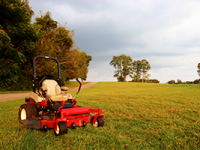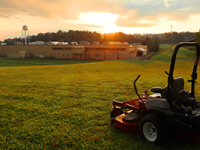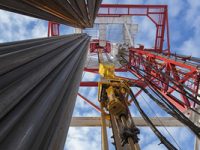How to Achieve Safe Motion Control in ATEX Environments
 Machinery and moving equipment is a vital element in all areas of modern automated industry, but what happens when the atmosphere in the working environment is potentially explosive?
Machinery and moving equipment is a vital element in all areas of modern automated industry, but what happens when the atmosphere in the working environment is potentially explosive?All motion control creates friction and, with sufficient magnitude, could provide a source of heat or ignition. A simple switch could be viewed as a potential ignition source. Therefore, machinery and equipment OEMs must use motion control components that are tested, rated and certified for safe use.
Explosive atmospheres in the workplace can be caused by flammable gases, mists or vapours, or by combustible dusts. If there is enough of the substance, mixed with air, then all it needs is a source of ignition to cause an explosion.
The ATEX Directive
ATEX (derived from the French term ATmospheres EXplosive) is the name commonly given to the European directives for controlling equipment designated for operation in explosive atmospheres.
The directives state that employers have a duty to eliminate or control the risks from explosive atmospheres in the workplace. Areas where hazardous explosive atmospheres may occur must be classified into zones. The classification given to a particular zone, and its size and location, depends on the likelihood of an explosive atmosphere occurring and its persistence if it does.
Zones and classifications
There are three zones classifying the presence of a potentially explosive atmosphere:
- Present continuously or for long periods (Gas Zone 0)
- Likely to occur in normal operation occasionally, typically between 10-1000 hours per annum (Gas Zone 1)
- Not likely to occur in normal operation, but if it does occur it will persist for a period typically less than 10 hours a year (Gas Zone 2)

Equipment and protective systems earmarked for deployment in these zones areas should meet the requirements of the Equipment and Protective Systems Intended for Use in Potentially Explosive Atmospheres Regulations 1996 (EPS).
EPS implements the ATEX directive within the UK, regulating the supply of products intended for operation in these hazardous environments. However, EPS also requires the supplier to provide instructions for the safe operation of the products.
To help with equipment classification, two classification groups have been established:
- Group 1 equipment is intended for use in underground mines and surface installations of such mines likely to be endangered by flammable vapours and/or dusts
- Group 2 equipment is intended for use in other places exposed to explosive atmospheres.
The level of protection offered in each group can be classified into normal, high and very high categories.
Specifying Motion Control Solutions

There are many examples of potentially explosive atmospheres across the industry in sectors such as oil and gas, power generation, chemical, pharmaceutical, wood processing and paint spraying.
Deploying motion control solutions in these industries means using a supplier with a thorough understanding of ATEX and products that can be operated safely and with confidence.
This means ensuring their products meet essential safety requirements and undergo appropriate conformity procedures. As a result, any component which contains or constitutes a potential ignition source requires preventative measures to be incorporated into its design or installation in order to prevent it from initiating an explosion.

The components are tested and certified by a ‘third-party’ certification body (known as a Notified Body) although some components can be self-certified for use in less hazardous explosive atmospheres.
Once certified, the equipment is marked by the ‘EX’ symbol to identify it as such, making it easier for you to identify products fit for its intended purpose and that adequate information is supplied to ensure its safe use.
A broad choice backed by applications expertise is vital to end customers seeking a safe and effective solution to motion control in potentially explosive environments.
Learn more
Parker offers many components suitable for use in ATEX environments, such as cylinders (including rodless types), valves, filters/absorbers, air motors, logic controllers, push buttons, solenoids, coils, limit switches and sensors. Download our catalogue to find out more.
 Article contributed by Franck Roussillon, european product manager for actuators, Pneumatic Division Europe, Parker Hannifin Corporation
Article contributed by Franck Roussillon, european product manager for actuators, Pneumatic Division Europe, Parker Hannifin CorporationRelated content
Know Your Pneumatics: Safety & Understanding Rod Locking Cylinders
Know Your Pneumatics: Specifying Cylinders for Size Restricted Spaces
3 Ways to Prevent Costly Downtime in Compressed Air Installations
Know Your Pneumatics: Specifying Cylinders for Size Restricted Spaces
3 Ways to Prevent Costly Downtime in Compressed Air Installations
Source: Parker Feed





